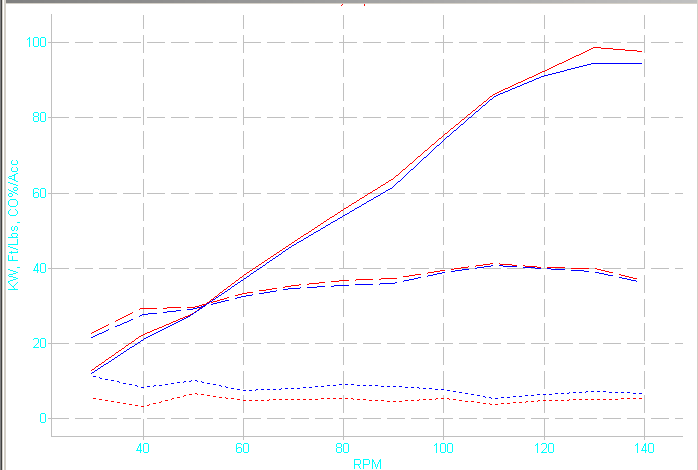OnAnySunday
Well-known member
a few hundred CCs and a half a brain is all you need.
[video=youtube;jzl98EEkGOk]https://www.youtube.com/watch?v=jzl98EEkGOk[/video]
1:55.. Don't need any CC's apparently...
a few hundred CCs and a half a brain is all you need.
[video=youtube;jzl98EEkGOk]https://www.youtube.com/watch?v=jzl98EEkGOk[/video]
Fancy pants rides a bike missing two cylinders. They lift so easy it's not funny
My r1 makes peak tq at 12.5 so that's where I shift.
Peak hp is useless any higher then peak tq.
Burgman 650
If your not making any more tq, your not going any faster.When your on it, you are usually always better off using the entire rpm range available, even if peak power tapers off before redline. Like you said peak numbers don't matter, because its the highest *average* power throughout the rpm range that matters. Simply look at a dyno graph and imagine an average of the low and high hp numbers of your power band. Shade in the area under the curve between your start and end rpm in a gear. Shifting early will usually lower the average power available in each gear. Every engine is different though and you can't use your butt you need a graph and some maths.
Also, if your gear ratios don't match a particular track then you may need to shift early to avoid banging the limiter before a braking zone but thats another topic :s
Sent from my SGH-I747M using Tapatalk
How fast is an R1 at redline in first gear?
07/08 R1's do 159km/h on the limiter in 1st, the 2009 and up just a hair slower. An 06 or newer R6 does 126km/h, just for comparison.Recent ones, over 140.
If your not making any more tq, your not going any faster.
qs keeps the rps where they need to be, I have had my bike dyno'd and It makes no more power at 13000 or tq then it does at 15000
so there is simply no point in revving the **** outta it.
tq is acceleration, no more tq gains, no more speed gains.
07/08 R1's do 159km/h
If your not making any more tq, your not going any faster.
tq is acceleration, no more tq gains, no more speed gains.


Some of these motorcycle engines have piston speeds close to the old F1 engines.
Awesome!!
1:55.. Don't need any CC's apparently...

